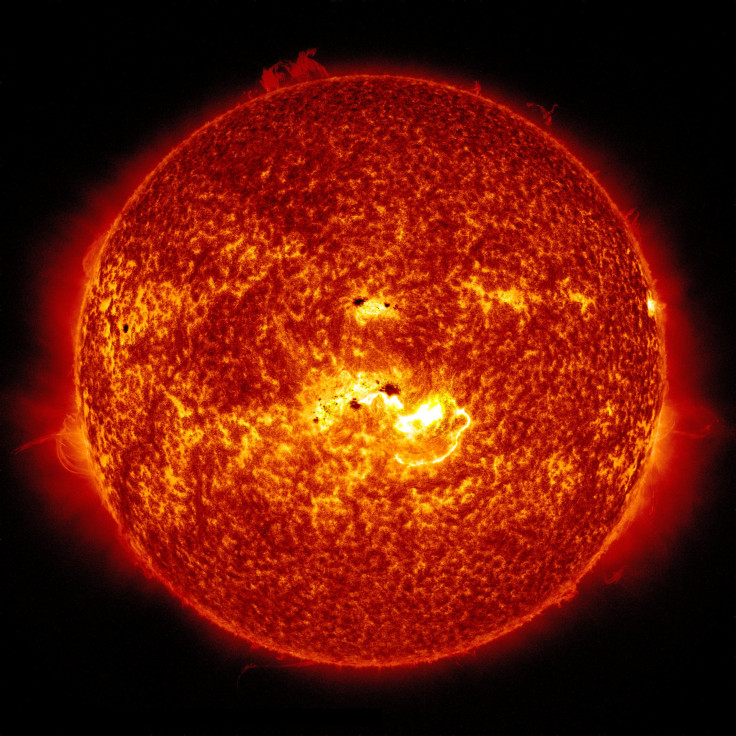Solar Activity Live Stream: Watch SLOOH Discuss The Solar Max And Solar Flares Here [VIDEO]
Despite the Solar Max being a bit of a dud so far -- the long-anticipated event hasn't delivered a dramatic increase in solar activity -- SLOOH will broadcast a live stream discussing the recent activity as well as a live observation of the sun on Feb. 19, beginning at 1 p.m. EST.

Still some recent developments have many hoping for a "double peak" for Solar Cycle 24. According to SLOOH, the last Solar Max event, the period of increased sunspot and solar activity in a solar cycle, occurred in 2000, Solar Cycle 24's max was supposed to occur in 2011. Scientists revised the max's start date to 2013 and again were disappointed to find little increase in the amount of solar activity.
Things were finally looking good for Solar Max at the end of 2013. Solar physicists from Stanford University predicted the magnetic fields of the sun to flip, marking the midpoint of Solar Cycle 24 and the start of the Solar Max. The North Pole had already changed signs and the researchers believed the South Pole's sign would change in either late 2013 or early 2014. The sun was quite active in November and there have been a few recent solar flares in 2014. The first X-class solar flare of 2014 occurred on Jan. 7.
SLOOH believes there may be a second peak of activity that will happen in the near future. The team of observatories is tracking solar storms that are traveling across the sun and this activity could produce an M-class solar flare. While there still may be some hope for the current Solar Max, many experts are predicting an even less-eventful solar minimum in the upcoming Solar Cycle 25, as well as another disappointing Solar Max between 2024 and 2025.
The solar activity live stream, courtesy of SLOOH, can be viewed below.
© Copyright IBTimes 2025. All rights reserved.






















